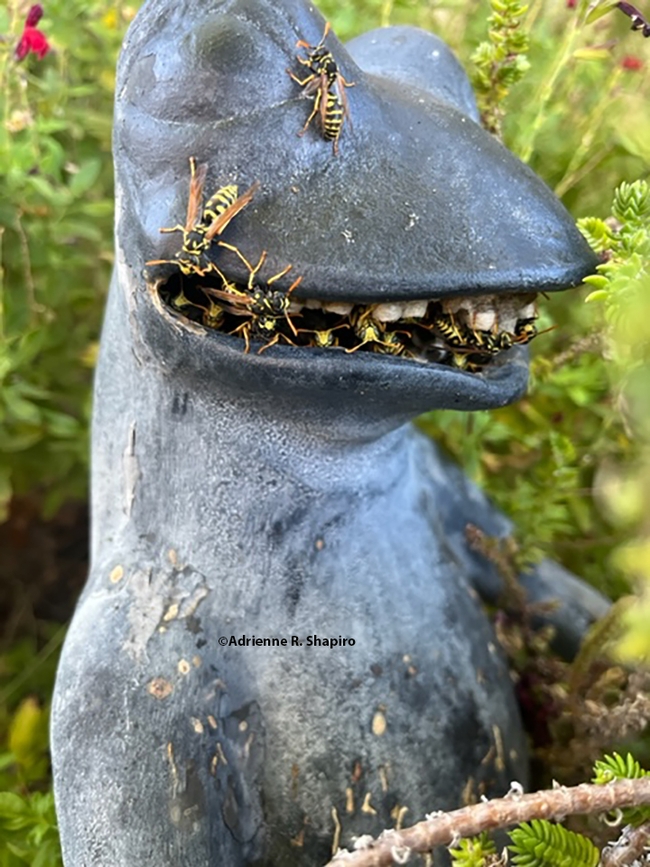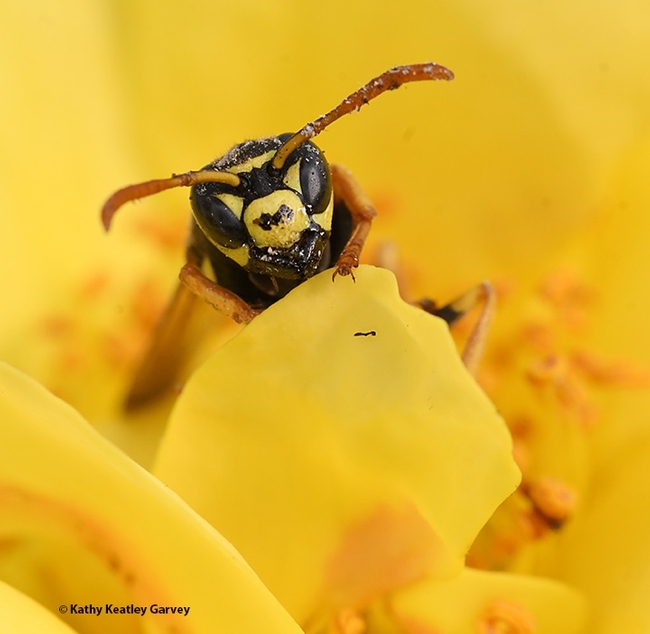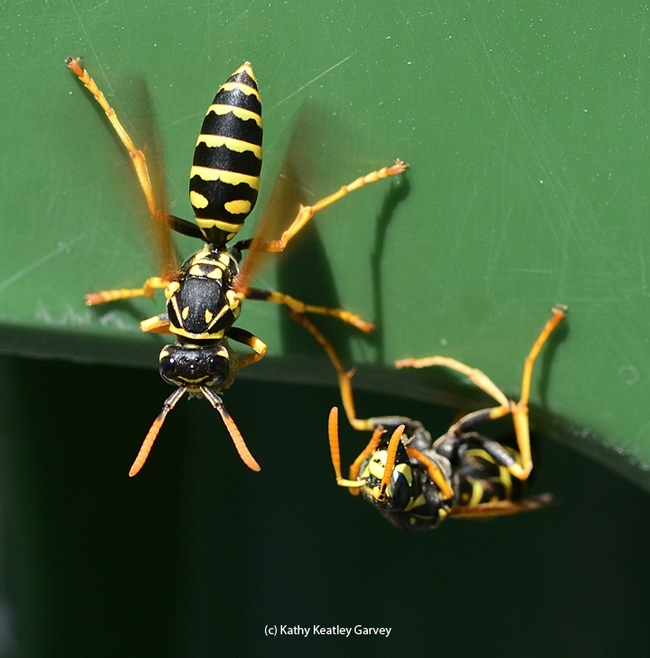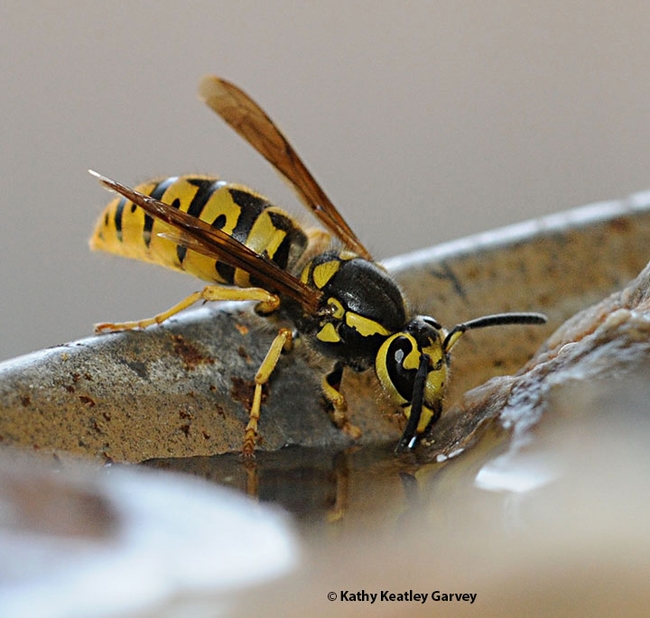
But have you ever seen a frog's mouth filled with an entire European wasp colony?
No?
Check this out! On Aug. 8, sharp-eyed Adrienne R. Shapiro of Davis spotted a colony of European paper wasps, Polistes dominula, nesting in the mouth of a garden frog statue in The Cannery neighborhood, Davis.
She shared several images with us. In the large image below, "you can see the paper nest inside the mouth," noted husband Art Shapiro, UC Davis distinguished professor in the Department of Evolution and Ecology.
Incredible image! And what a mouthful.
Passersby may think these insects are yellowjackets nesting in the frog statute, but they are not. They are European paper wasps. "The first North American occurrence of P. dominula was reported in Massachusetts in the late 1970s, and by 1995, this species had been documented throughout then northeastern USA," according to Wikipedia. "Behavioral adaptations of P. dominula have allowed it to expand outside its native range and invade the United States and Canada. While most Polistes species in the United States feed only on caterpillars, P. dominula eats many different types of insects."
UC Davis distinguished professor Lynn Kimsey, director of the Bohart Museum of Entomology, says "There are three very different kinds of social wasps that make paper nests: yellowjackets, hornets and paper wasps."
In one of her Fact Sheets on the Bohart website, Kimsey writes: "Although they all belong to the same family of wasps, Vespidae, they build quite different kinds of nests. Paper wasps in the genera Polistes and Mischocyttarus build open-faced nests, where the individual cells are exposed. Hornets and yellowjackets build cells in separate combs that are all enclosed in a paper shell or shroud. Yellow jackets tend to build their nests in cavities. Hornets often create spherical free-hanging nests, but will also build nests in colonies."
Frankly, it's easy to distinguish the European paper wasps from the yellowjackets by the color of their antennae. European paper wasps have orange-tipped antennae while the antennae of the yellow jackets are black. Read what the UC Statewide Integrated Pest Management (UC IPM) says about "Yellowjackets and Other Social Wasps."
Now if a frog statue could talk..."Jumping Jehoshaphat! One more wasp in my mouth and I'll croak!"
Attached Images:

Adrienne R. Shapiro of Davis captured this image of a nesting European paper wasps in the mouth of a garden frog statue in a Davis neighborhood. (Photo courtesy of Adrienne R. Shapiro)

A European paper wasp nest in Vacaville, Calif. (Photo by Kathy Keatley Garvey)

A European paper wasp peeks over a yellow rose in Vacaville, Calif. (Photo by Kathy Keatley Garvey)

European paper wasps exiting a nest in a recycling bin at the University of California, Davis. (Photo by Kathy Keatley Garvey)

A yellowjacket drinking water on a hot day. Its black antennae distinguish it from the orange-tipped antennae of the European paper wasp. (Photo by Kathy Keatley Garvey)